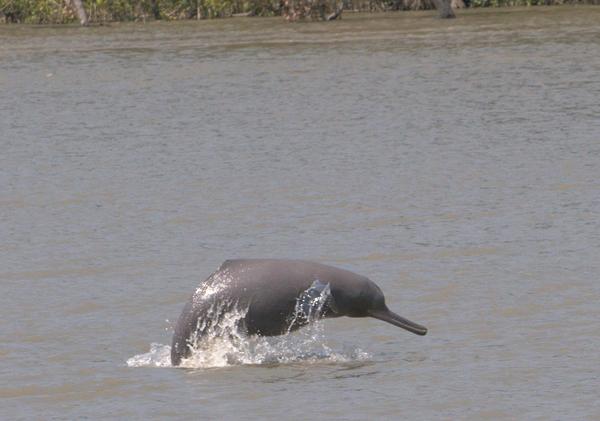
New Dolphin Sanctuaries Open to Protect Rare Species

Rare and threatened species of dolphins got some good news with the opening of three new wildlife sanctuaries in Bangladesh, the Wildlife Conservation Society announced today (Feb. 14).
Bangladesh's government declared the areas to be wildlife sanctuaries Jan. 29, establishing them in part to protect freshwater dolphins in the Sundarbans, the world's largest mangrove ecosystem.
The sanctuaries will serve the last two species of freshwater dolphins in Asia: the Ganges River dolphin and the Irrawaddy dolphin.
Although there is no global population estimate for either species, both have disappeared from major portions of their range. Yet both species occur in sufficient numbers in the Sundarbans, which may serve as a global safety net for preventing their extinction. Freshwater dolphins are among the most threatened wildlife on Earth because their habitat is highly degraded by human activities, including dam construction and unsustainable fisheries.
The three sanctuaries safeguard 19 miles (31 kilometers) of channels that were found by a 2010 Wildlife Conservation Society study to be important habitat for the dolphins and were threatened by human activity.
"Declaration of these wildlife sanctuaries is an essential first step in protecting Ganges River and Irrawaddy dolphins in Bangladesh," said Brian Smith, director of the WCS' Asian Freshwater and Coastal Cetacean Program.
The sanctuaries will be a natural laboratory for learning how to balance wildlife conservation with a large and growing human population, said Tapan Kumar Dey of the Bangladesh forest department.
Get the world’s most fascinating discoveries delivered straight to your inbox.
The dolphins are threatened by fishing gear, depletion of their prey and increasing salinity and sedimentation caused by sea-level rise.
News of the declared sanctuaries follows the extinction of the Yangtze River dolphin, last detected in a confirmed sighting in 2002. Entanglement in nets and habitat degradation killed off a species that had existed in the Yangtze River of China for 10 million years.
In addition to conserving globally important populations of freshwater dolphins, the new wildlife sanctuaries in the Sundarbans are expected to provide protection for other threatened aquatic wildlife including the river terrapin, masked finfoot, and small-clawed otter.
Follow OurAmazingPlanet for the latest in Earth science and exploration news on Twitter @OAPlanet and on Facebook.




